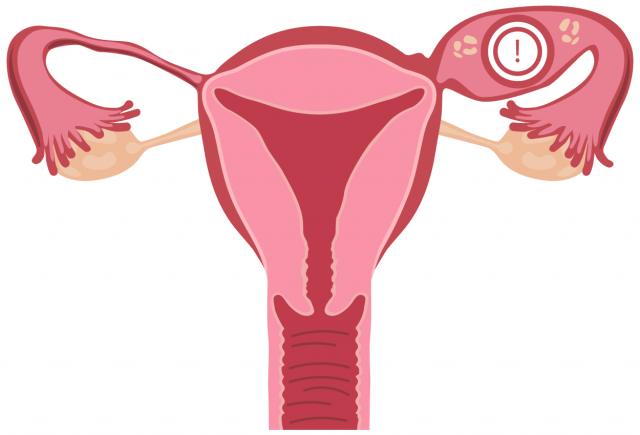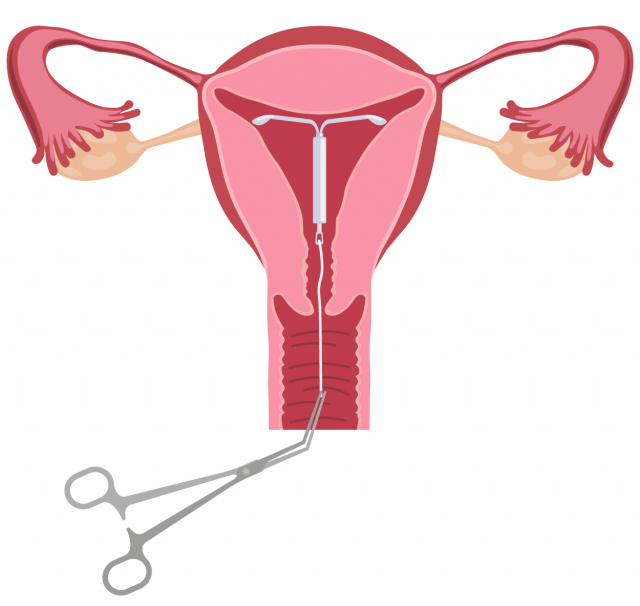After My Iud Renoval I Having Burning in Lower Back
Mirena Removal
A doctor may remove a Mirena IUD if it needs to be replaced with a new one or if the woman wants to become pregnant. During Mirena removal, the doctor will use forceps to pull on the strings of the IUD until it slides out. Light spotting may occur after removal. To avoid possible complications, Bayer doesn't recommend women remove their own Mirena.
A doctor or health care provider performs Mirena intrauterine device (IUD) removal in a medical office. Most insurance plans cover Mirena IUD removal. The procedure should only take a few minutes.
There are several reasons why a doctor will remove Mirena. Usually, the doctor will replace an old IUD so it remains effective. Another reason is because a woman wishes to have a baby.
Did You Know?
A doctor should remove and replace Mirena after five years for it to remain effective.
If a woman does not want to have a baby, she should have Mirena removed within seven days of the start of her period. If a woman removes the IUD within eleven days of having sex during any other time of the month, pregnancy may happen.

Pelvic inflammatory disease can happen if someone with an undiagnosed STI gets an IUD.
Sometimes, removal might be more complicated if there have been side effects with Mirena. These include serious side effects such as perforation of the uterus, pregnancy outside the uterus (ectopic pregnancy) or infection.
Complications can occur during insertion, while Mirena is in the uterus and during removal. Women who have suffered complications such as uterine perforation or ectopic pregnancy have filed Mirena lawsuits against Bayer.
Reasons for Mirena Removal
Usually, doctors remove Mirena to replace it or because women want to become pregnant. But, some women's health conditions or Mirena side effects may require removing the IUD.
Reasons to remove Mirena may include:
- Severe bleeding that could lead to anemia
- Sexually transmitted disease
- Pelvic infection or endometriosis
- Pregnancy
- Pain during sex
- Cervical cancer
- Uterine perforation
- Severe migraines
- Increased blood pressure
- Arterial disease or stroke
If you are experiencing any of these Mirena side effects, consult your doctor. Your doctor may recommend Mirena removal.
What to Expect During Mirena IUD Removal
Typically, Mirena removal can be successfully completed in a few minutes. The doctor uses forceps to pull the IUD's strings. The arms of the device should then fold, allowing for easy removal.
"The vast majority of the time, [IUD removal] simply involves doing a simple exam much like a Pap smear."
If the strings are missing, the doctor may need to rule out pregnancy and then use a sonogram or X-ray to locate the Mirena. The device can then be removed with narrow forceps. The doctor may need to dilate the cervical canal.

During Mirena removal, a doctor uses forceps to tug on the IUD strings.
If the Mirena perforated the uterus or moved from the uterus, doctors may need to surgically remove the IUD. Uterine perforation is more likely to occur during Mirena insertion rather than removal.
Doctors may have to treat any infections with antibiotics before removing the device.
Women may experience cramping as the device is removed. Mirena removal pain is usually minor and should only last a few moments.
What to Expect After Mirena Removal
After a routine Mirena removal, there should be no symptoms or pain. Some light spotting can occur. If women experience severe pain, fevers or excessive bleeding after removal, they should contact their doctor.
When Will My Period Return After Mirena Removal?
It may take a few months for a woman's period to be regular again. A woman's period should return to the way it was before Mirena implantation.
How Does Mirena Removal Affect Fertility?
Most women's fertility will go back to normal after Mirena removal, and they can get pregnant quickly. If a woman does not want to get pregnant after having an IUD removed, she should use another form of birth control.
"We found no difference in 12-month pregnancy rates or time to pregnancy between former IUD users and users of other contraceptive methods. However, there was a clinically and statistically significant reduction in fertility in African American women."
Mirena IUD Removal Side Effects
While most women do not experience issues after Mirena removal, some side effects may occur.
For example, if a woman gets pregnant while on Mirena, removing the IUD may result in pregnancy loss.
Side effects after IUD removal may include:
- Pain and cramping
- Bleeding
- Mood swings
- Nausea
- Breast tenderness
- Passing blood clots
- Fatigue
- Depression
- Weight gain
Should You Remove Mirena Yourself?
Bayer and most doctors do not recommend removing Mirena at home because of possible complications.
In addition to missing strings and Mirena migration, which makes locating the device difficult and requires a doctor's assistance, there have been rare cases of serious issues during removal. For example, cases of damage to the ulnar nerve, which sends electrical signals to muscles, have been reported.
While severe complications are not typical, having your Mirena removed at a doctor's office can ensure that immediate medical attention is available should any health issues arise.
"When I needed my own IUD removed I did not do it myself. Even though I have inserted and removed thousands I went to a gynecologist."
Please seek the advice of a medical professional before making health care decisions.
- Mirena Overview
- Lawsuits
- Insertion
- Removal
- Side Effects
After My Iud Renoval I Having Burning in Lower Back
Source: https://www.drugwatch.com/mirena/removal/
0 Response to "After My Iud Renoval I Having Burning in Lower Back"
Post a Comment